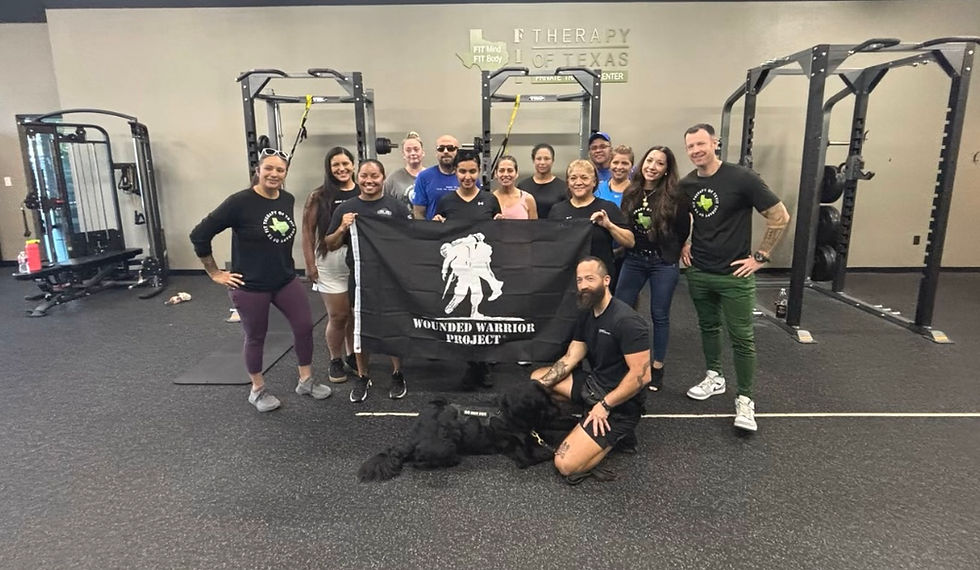Fat Loss Secret Weapon: Strength Training & Progressive Overload
- Fit Therapy of Texas
- Sep 3
- 2 min read
When most people think about fat loss, they jump straight to cardio or cutting calories. While those strategies play a role, there’s one powerful (and often overlooked) tool that can completely change the game: strength training with progressive overload.
If your goal is to burn fat, boost your metabolism, and reshape your body, this is where the magic happens.

Why Strength Training Matters for Fat Loss
Cardio burns calories while you’re doing it, but strength training does much more. Every time you lift weights, you send a signal to your body to build and maintain muscle. And muscle is metabolically active tissue, which means it burns more calories even when you’re resting on the couch.
Here’s why that matters for fat loss:
Increased metabolism: More muscle means your body burns more calories 24/7.
Better body composition: You’re not just losing “weight,” you’re losing fat while keeping (or even gaining) lean muscle.
Sustainable results: Instead of yo-yo dieting, you’re creating a body that naturally works harder for you.
The Power of Progressive Overload
Lifting the same weights, for the same reps, week after week might feel good, but it won’t move the needle. Your body adapts quickly, and once it does, fat loss stalls.
That’s where progressive overload comes in. This simply means gradually increasing the demand on your muscles over time, so your body keeps adapting, getting stronger, and burning more calories.
Ways to apply progressive overload:
Increase the weight you’re lifting (even 2–5 lbs makes a difference).
Add more reps or sets with the same weight.
Improve form and range of motion, making the exercise more effective.
Reduce rest time between sets for an extra challenge.
Even small progressions add up. If you’re stronger this month than you were last month, you’re moving in the right direction.
Putting It All Together
If fat loss is your goal, here’s the winning formula:
Strength train at least 3 times per week. Focus on compound movements like squats, deadlifts, rows, and presses.
Track your progress. Write down weights, sets, and reps so you know when to increase.
Stay consistent. Fat loss isn’t about quick fixes; it’s about stacking small wins week after week.
Fuel your body. Pair strength training with a balanced, nutrient-dense diet that supports your goals.








Comments